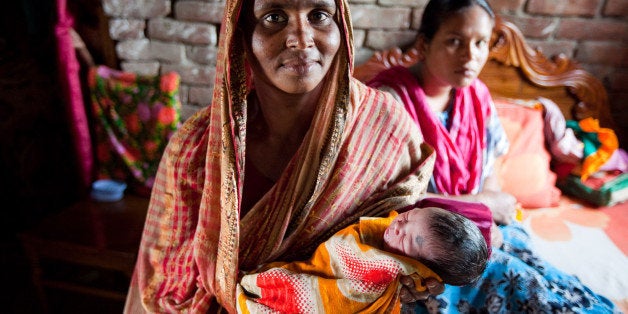
New global estimates of child mortality show important gains have been made for nearly all causes of child death, except one in which progress has remained nearly stagnant: newborn mortality.
Newborn mortality (death within the first month of life) now accounts for 44 percent of all under-5 child deaths worldwide, and preterm birth has emerged as the leading cause of newborn mortality and leading cause of all under-5 deaths. Even in high-income countries with sophisticated intensive care, preterm birth remains the most frequent cause of infant mortality.
Looking back to September 2000, world leaders from 189 countries gathered at the United Nations and unanimously adopted the Millennium Development Goals, a series of eight priority targets to be achieved by 2015. One of the eight priorities was to reduce under-5 child mortality by two-thirds. In this year of reckoning as we approach the 2015 target date, we have the opportunity to look back at the remarkable progress that has been achieved in child survival. Global commitments to malaria, HIV, pneumonia, diarrheal diseases, measles, tetanus and nutrition have collectively made tremendous inroads toward reducing childhood deaths.
Two decades ago, it was hard to believe this progress could be possible. These were daunting tasks. The first trials of antiretroviral therapy in pregnant women were just being completed. Resistance to anti-malarial drugs was rampant. Studies were just underway that would later demonstrate the effects of insecticide-treated bed nets on malaria mortality. Lack of clean water and sanitation was commonplace. So what happened? Global targets were made. A path was set. Commitment and investments grew. Research identified new solutions that were moved to scale. We witnessed global change.
But now we must face the intractable problem of preterm birth. The challenge ahead is no less daunting than those confronted two decades ago. Commitment and investment are clearly needed for maternal and perinatal care and family planning to improve survival of both mothers and newborns. But public health history has repeatedly shown that the greatest impact, at lowest cost, always comes through prevention. Despite the high global burden of preterm birth, little information is available on how to prevent its occurrence.
The causes of preterm birth are multiple, complex and poorly understood -- an intricate interplay of social, genetic and biological determinants. Multiple risk factors are associated with preterm birth, including poverty, family history, infections, nutritional deficiencies, race and ethnicity, and emotional and physical stress. Advancing prevention must therefore come through a comprehensive research agenda that will reveal what happens during pregnancy that causes preterm birth.
Tackling the scientific complexities of preterm birth will require the same vision, commitment and direction dedicated to the other leading causes of childhood mortality. The global public health community has taken the challenge head-on. Political will is exemplified by the Every Newborn Action Plan that was endorsed in May 2014 by the World Health Assembly. Key organizations that fund research came together to form the Global Coalition to Advance Preterm birth Research (GCAPR) to accelerate strategic priorities in preterm birth research. Scientific experts from around the world convened in 2013 and developed a "Solution Pathway" to galvanize a cohesive agenda for preterm birth research. A new state-of-the-science overview brings to the forefront innovations in science and technology to advance discovery in the field of preterm birth.
Today is World Prematurity Day. Today, we face the post-2015 challenge of preterm birth in the same way that we once faced the other leading causes of child mortality two decades ago, challenges with limited solutions and against great odds. Today we have come to forge the commitment, to advocate for the required resources and to roll up our sleeves and start the arduous journey, taking the next step on the long path ahead for the prevention of preterm birth.